Launching a new feature for your SaaS product is always an exciting affair.
However, your users can’t be expected to show the same enthusiasm if you don’t put in the effort to present your new features in an engaging way that encourages use.
In this article, we’ll show you a couple of tried and tested methods of announcing new features that will have users lining up to try them out.
With the uptick in product use, you can also expect increased product adoption, so there’s really a lot to look forward to here.
Let’s start with a consideration of where the announcement should be made.
Use Multiple Channels to Announce New Features
All users can benefit from new feature announcements, but to ensure that the good news reaches the highest possible number of your customers, it’s a good idea to develop a multi-channel communication strategy.
Here are some channels commonly used for announcing new features:
- In-app notifications
- UI modals
- Company blog
- Email announcements
- Social media posts
As you may have noticed, there are essentially two formats of feature announcements: in-app and external announcements.
It’s a good practice to have both formats represented as this will allow you to reach your active users, as well as people who haven’t logged into their accounts for a while.
Let’s look at an example of both in-app and external feature announcements.
UI modals are a way of alerting active users to new features. They’re pretty hard to miss, as you can see below.
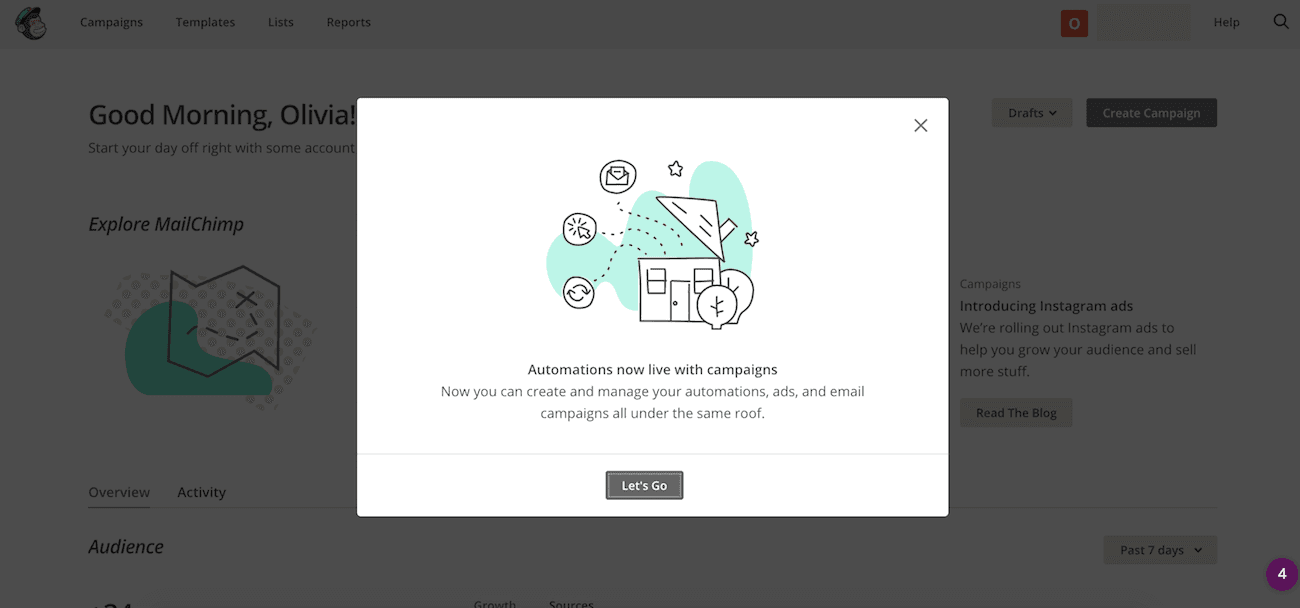
Source: Chameleon
They work as a type of pop-up element in the user interface that blurs out the rest of the screen to capture the user’s attention.
They usually include a visual element to give the user an idea of what the feature does, while a short text explains the change.
UI modals are extremely effective but also somewhat intrusive in that they can disrupt the user’s work, so use them sparingly. For instance, only when announcing new major features.
A good method of announcing new features outside of the user interface is creating an email campaign.
Experts such as Noa Dror, digital marketing and content manager at Oracle, have found this to be a highly effective method because of its reach and ability to engage dormant users:
We found out that newsletters about new features have a surprisingly high opening rate. You can arouse interest and get a few lines worth of information across. If it’s a REALLY good email (or a nifty feature), you might even prompt your users to “log back in” from the email.
Here’s an example from Airtable:
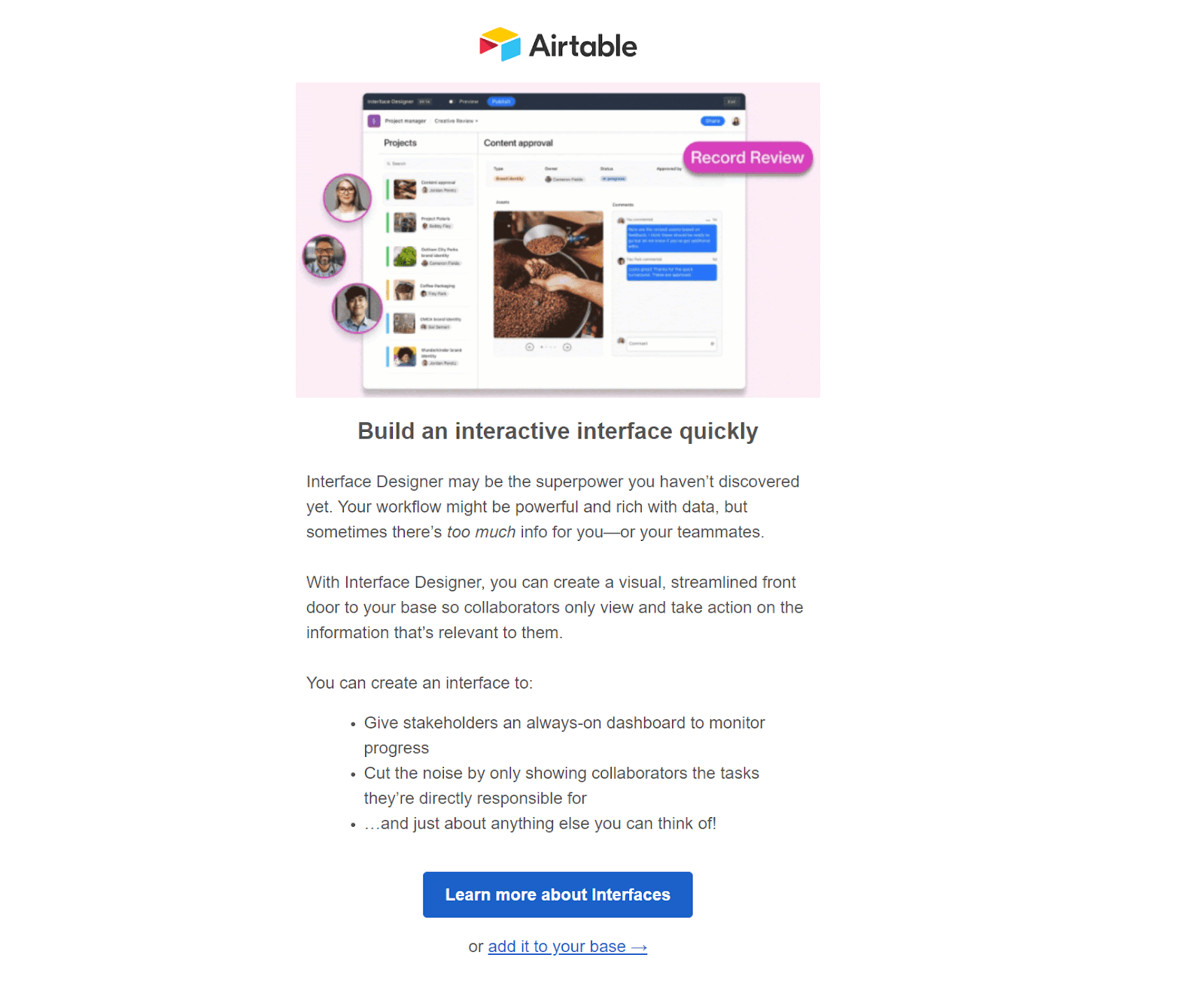
Source: Airtable
Speaking about newsletters, you can subscribe to our Archbee blog weekly Newsletter!
All the elements of a good announcement can be found here, including a screenshot, strong copy describing the feature, and a CTA that motivates the user to try the feature out.
An email will give you more space to talk about the feature, which might come in handy when motivating inactive users, who usually need a bigger push to try out a new feature after a period of absence from the product.
Remember, as useful as your new feature might be, it’s not going to get traction if you don’t do a good job alerting your users to it. So make sure you’re announcing new features on multiple channels.
Tailor the Announcement to Each Customer Segment
New feature announcements are an essential type of communication between brands and their customers.
And in recent times, the buzzword that has come to govern communication strategy is personalization.
McKinsey’s research has shown that a great majority of customers expect you to customize your messaging to their specific needs, and might get frustrated with bland, impersonal communication.
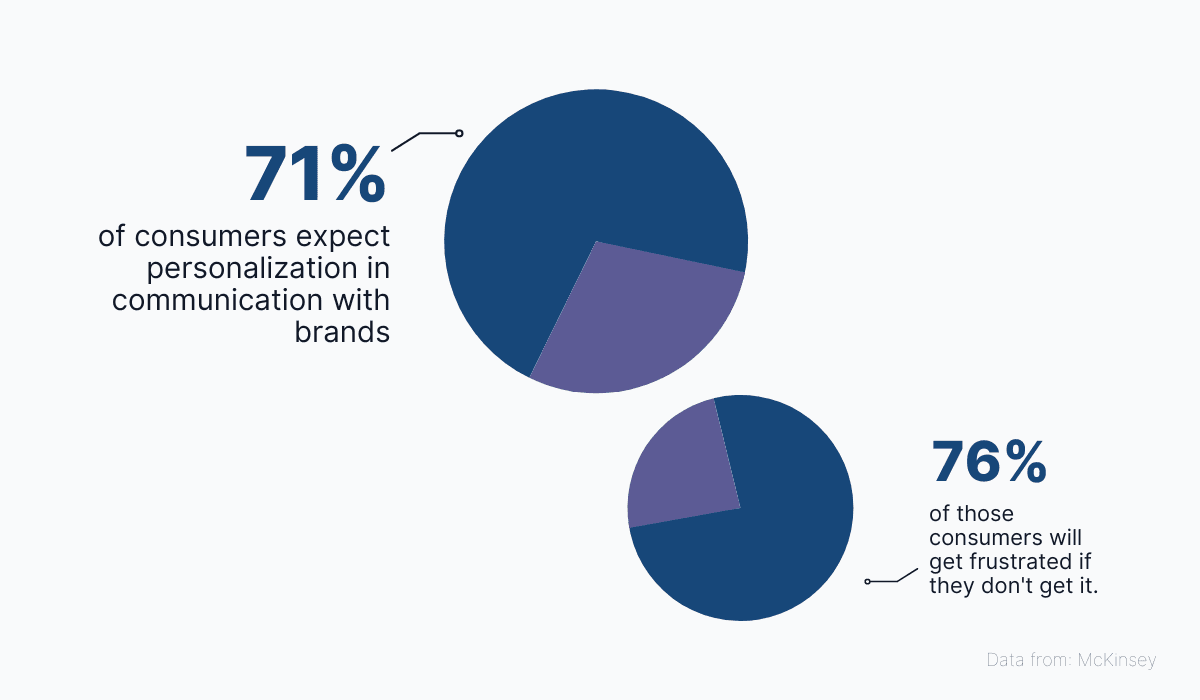
Source: Archbee
This means that, aside from reaching as many users as possible with your announcement, you’ll also have to put in the effort to tailor that message to fit the needs of different customer segments.
There are different ways to segment your audience for this purpose, but we suggest you consider the following:
- Active users who access the product regularly.
- Lapsed users who need to be enticed to come back.
- Users who left feedback or otherwise requested this specific feature.
Each of these proposed segments has a different motivation to try out the feature and can be enticed with a well-crafted message.
For example, inactive users might find it interesting that you’ve improved and advanced your product since they last logged in.
If the software hasn’t wholly met their needs in the past, your newest feature might just be what they needed to resume the adoption process.
Asana does this pretty well. Have a look below:
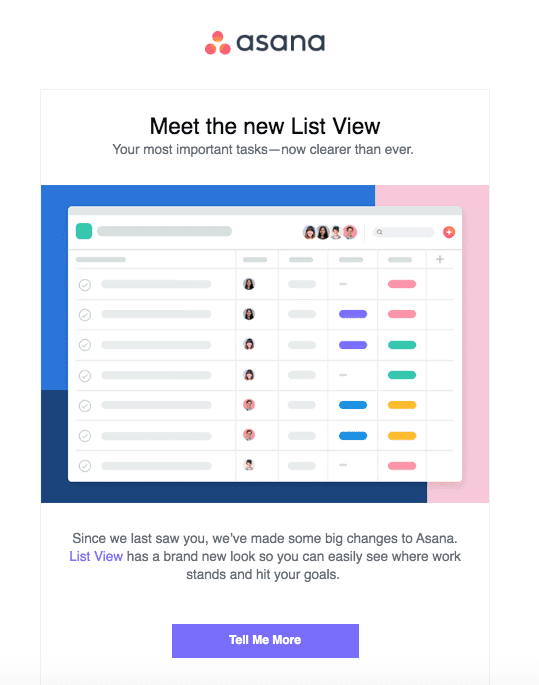
Source: Appcues
This kind of email should be tempting enough for the lapsed user to log in and see the new interface.
If they do, there’s a good chance they might continue using Asana and even decide to renew their commitment.
If you create a separate segment for users who requested the feature you’re now implementing, they will certainly appreciate that you are reaching out to them and letting them know that their voice has been heard.
You could notify them by replying to their feedback once the feature is live, like in this example:
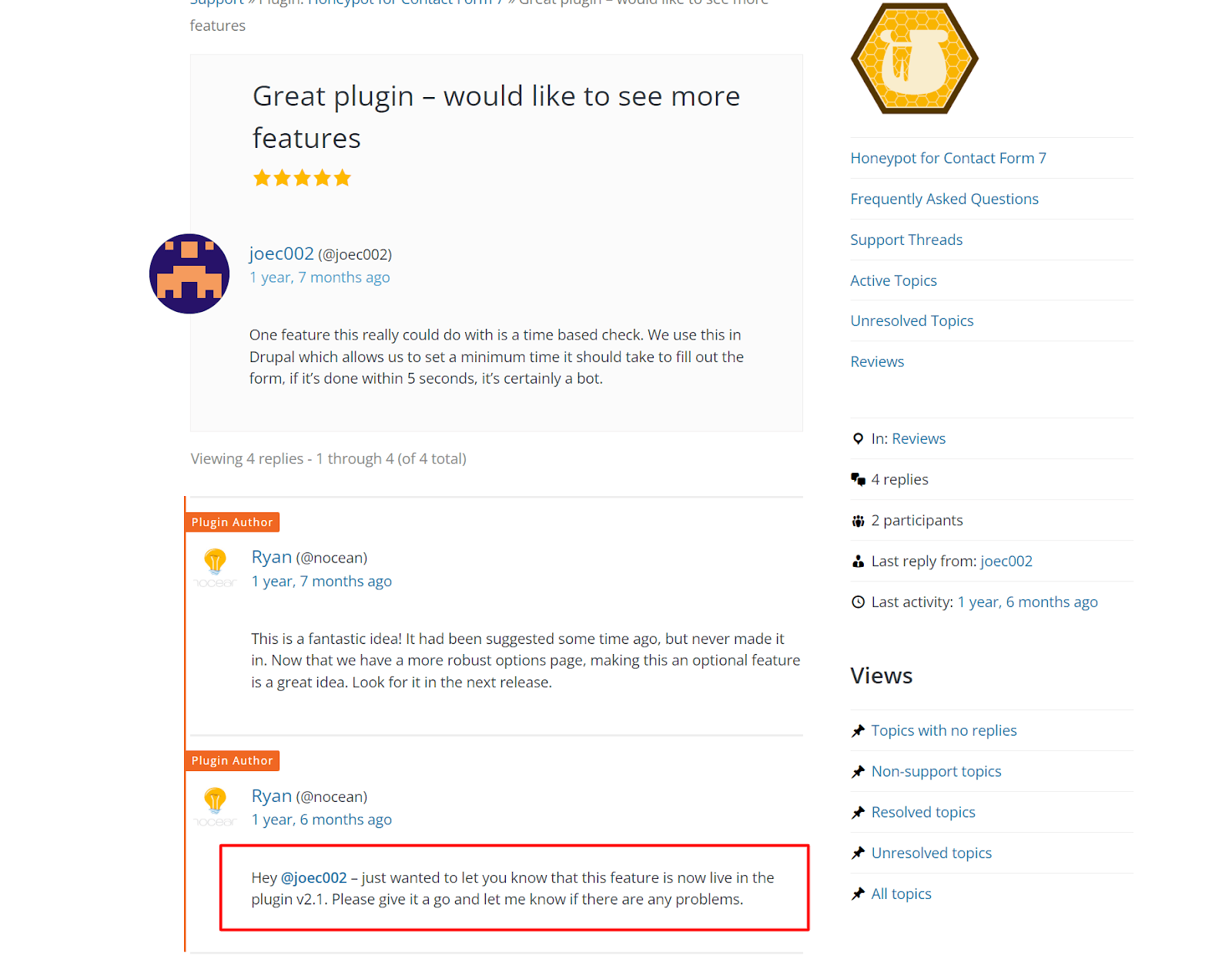
Source: Honeypot Plugin on Wordpress
By notifying users with a personalized message, you’re communicating that you care for them and that you’re working to fulfill their needs.
That’s sure to inspire loyalty and make it that much more likely that users will stick with you in the long term and completely adopt the product.
As you can see, the way you craft your messaging when announcing a new feature can potentially impact the adoption process in your users.
So try to find out what your audience segments are and approach them individually for best results.
Capture Customers’ Attention With Great Visuals
It’s always a good idea to supplement your new feature announcements with vibrant and topic-relevant visuals.
This is because our brains process visual information faster and more efficiently than text, which helps us understand what is being communicated and retain it for a longer time.
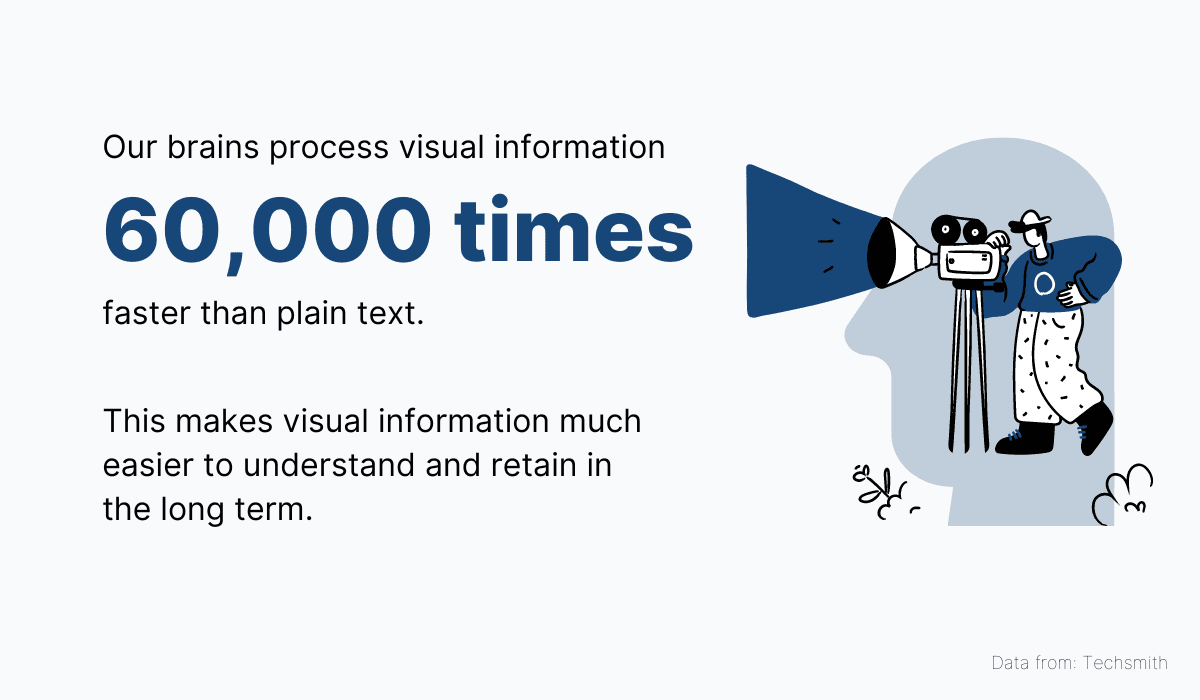
Source: Archbee
That means your new feature announcements will be more comprehensible and memorable to users who are receiving them if they’re accompanied by great visuals.
And with a better understanding, users are more likely to integrate the new feature into their work, increasing overall product adoption.
The visuals themselves depend on the nature of the feature you’re presenting to users.
For example, if you’re updating your user interface, the best accompanying visual might be a clear screenshot that instantly shows the user what’s new.
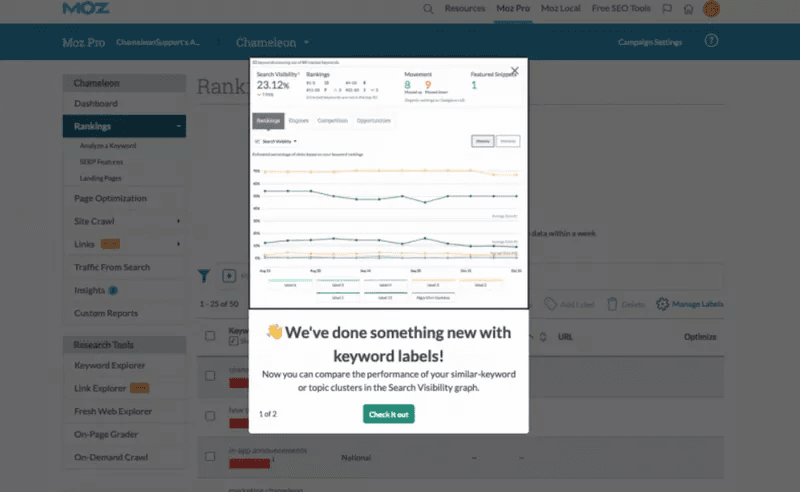
Source: Userpilot
Users who are accustomed to the interface will understand what’s changed and be able to implement the new feature without any friction.
On the other hand, if you’re introducing a new workflow, then the best course of action could be to present the feature as a series of stylized images that explain the new procedure, step by step.
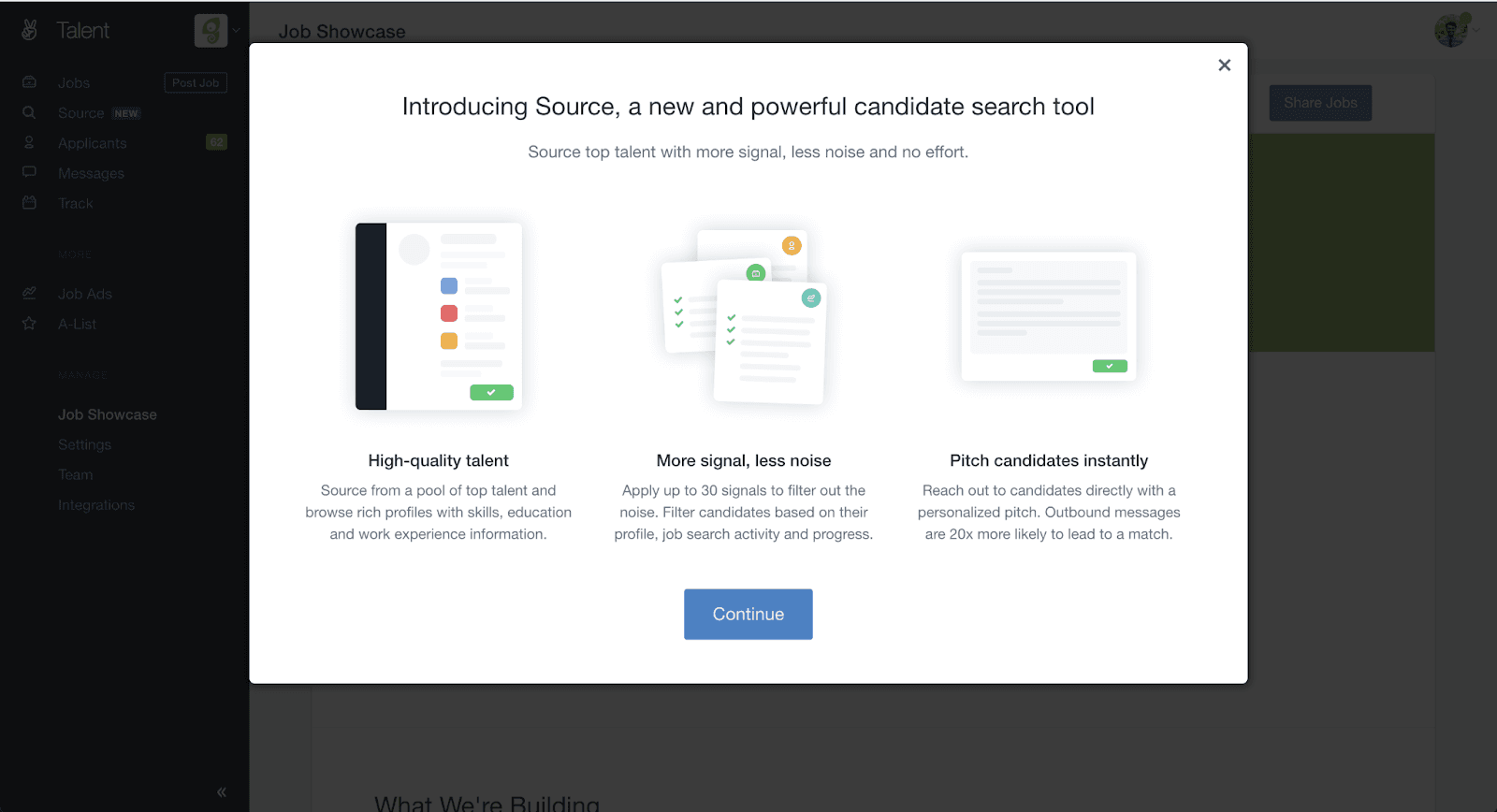
Source: Chameleon
Some companies even implement GIFs or short videos to give these kinds of announcements more contextual information and provide a quick tutorial on how the feature works.
These media-rich announcements also make great social media posts, providing double value for your adoption efforts because they can engage inactive users and potential customers, while also informing active users.
Asana gives us another great example here:
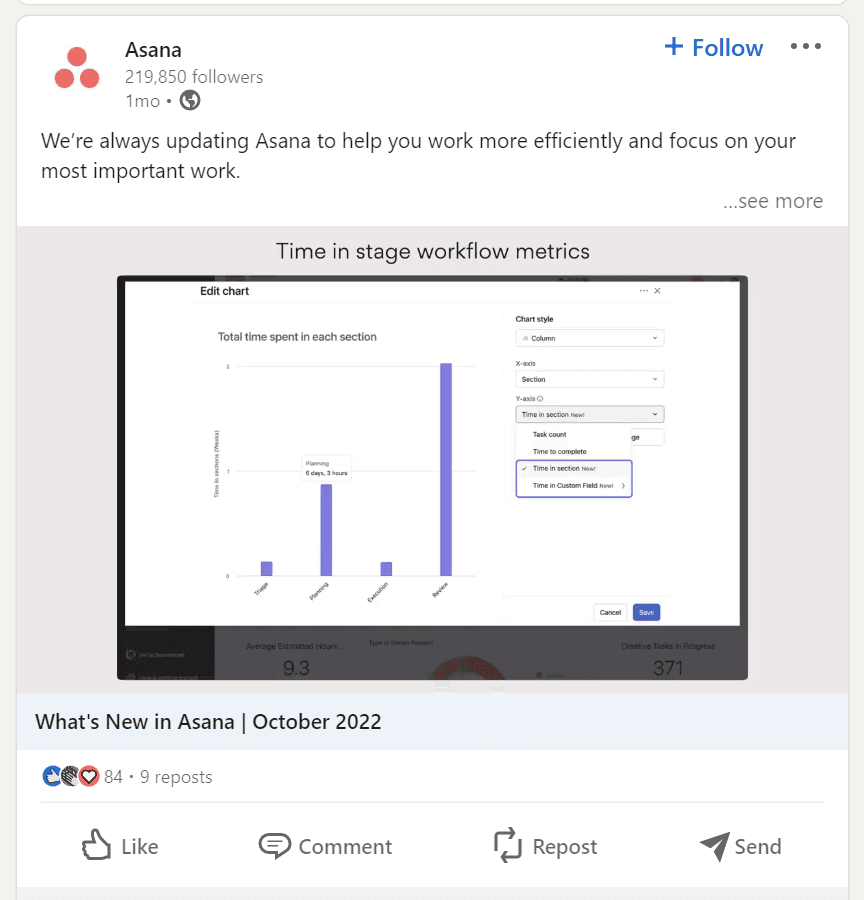
Source: Asana on LinkedIn
Asana often announces new features in monthly roundups and supports them with a short explanatory video, which makes updates easy to follow and comprehend.
That’s a great practice to follow.
The key takeaway here is that visuals make feature announcements more digestible for your users.
Improved understanding leads to easier implementation, which drives product adoption for your users.
Highlight Feature Benefits With Great Copy
It’s important to understand that the quality of the feature itself isn’t enough to guarantee broad implementation.
Your users need a good reason to try out the feature, and if you can’t provide it, they might just gloss over it and continue their work.
In that case, your new feature will have zero effect on product adoption.
Thankfully, expertly-crafted copy can engage, motivate, and provide direction for users who have a lot to gain from your new feature.
If you want to write this kind of copy, all you have to do is not talk about the feature itself.
Seems counterintuitive, right?
Well, the truth is that users don’t care how the feature works or how difficult it was to build. All they care about is the benefit they stand to gain from it, so that’s what you need to focus on.
Let’s analyze an example from Chameleon to see how this works.
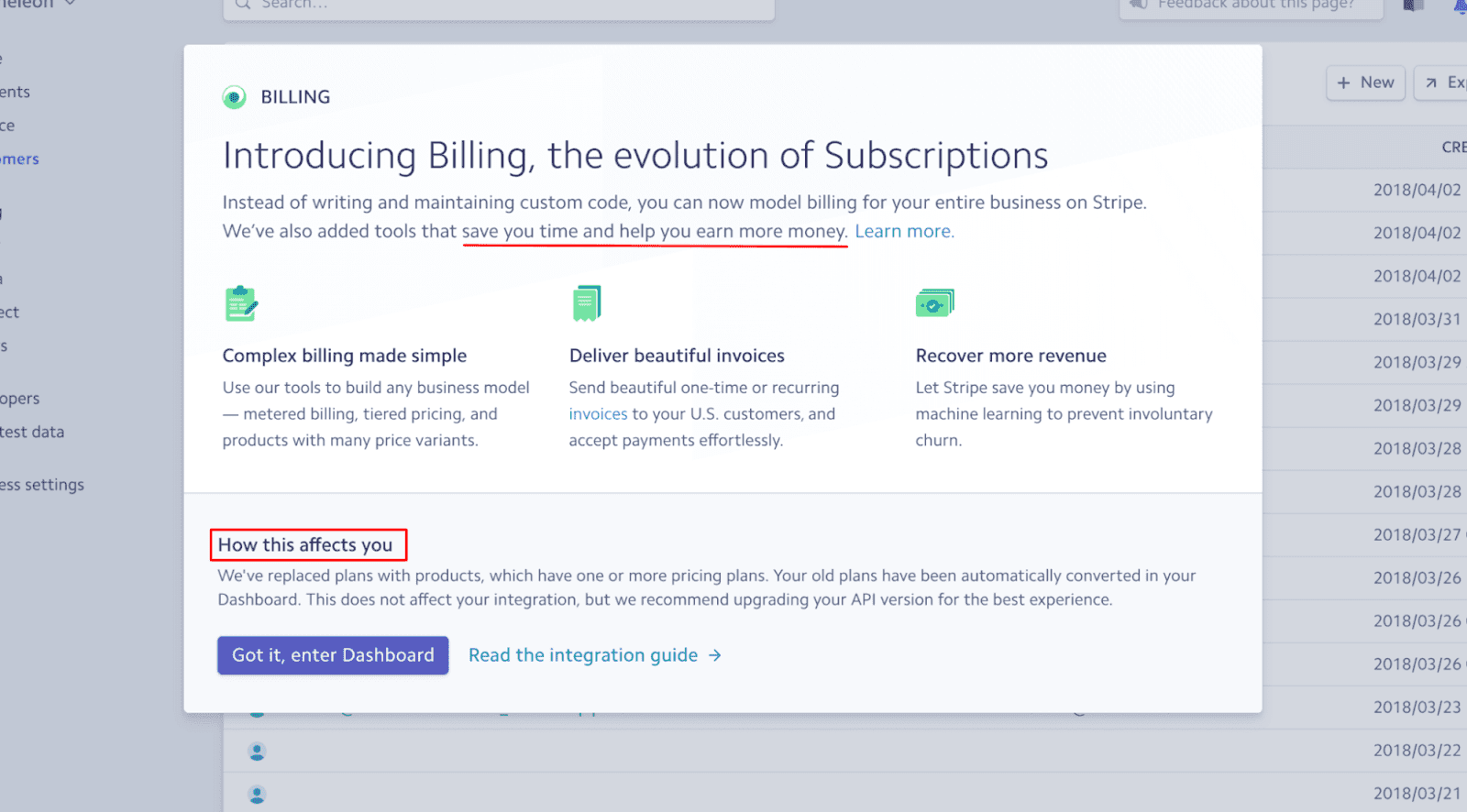
Source: Chameleon
When Chameleon introduced a change to their Billing feature, they explained very little about how the feature works.
Instead, they focused on the added value it would bring to users (saving time and increasing earnings).
The announcement then goes into more detail about this update, but every functionality is again explained in terms of potential benefits (simplified billing, added value for invoices, revenue recovery).
The announcement ends with a note explaining exactly how the update will affect the user.
Reading this announcement, you’ll agree that it does a very good job of convincing the user that the change has a positive impact on their experience with the product.
Before we conclude this section, we should also mention that new feature announcements should always include a call to action and a button that takes the user directly to the feature.
CTAs are a powerful tool when you want users to complete an action (such as visiting a new feature.) For instance, a CTA in an email can increase clicks by 371%.
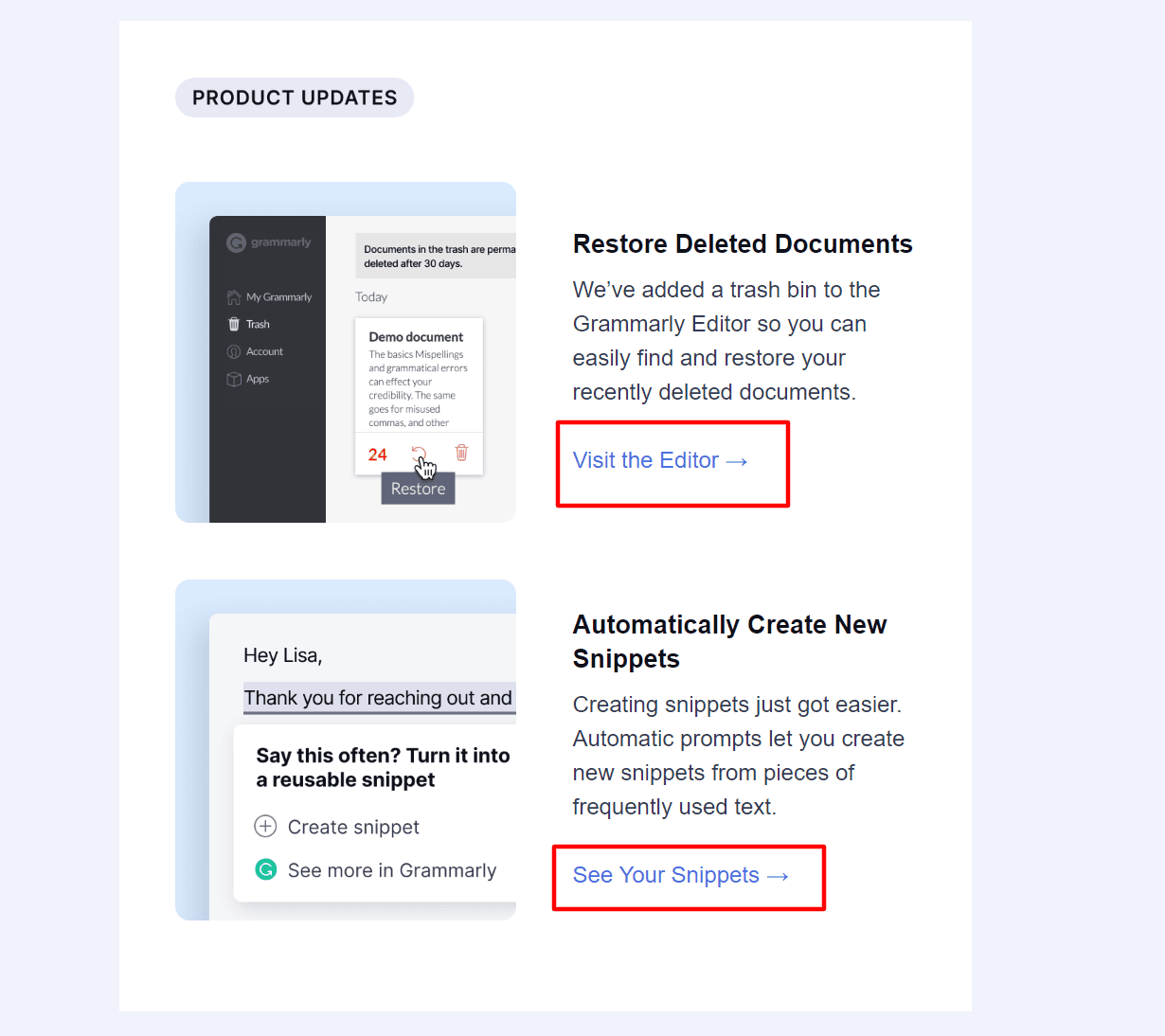
Source: Grammarly
Long story short, new features are seldom self-explanatory.
Write some thoughtful copy to announce them and focus on feature benefits if you want the new feature to drive product adoption.
Guide Customers to Your Knowledge Base
In most cases, you’ll need more space to explain and describe the new feature to users than a brief announcement (on any channel) will allow you.
After all, it never hurts to provide additional information and resources that can help users learn about the new feature and its usefulness.
Access to information and education resources can only improve the user’s experience and help them adopt the product faster.
Luckily, there are ways to provide access to this kind of information, even within a compact feature announcement.
The easiest one is including links and guiding users to your product knowledge base, where they can read more about the feature or clarify details they didn’t fully understand.
Best of all, you can do that with any announcement channel you use to deliver your message because links can be effortlessly included in emails, social media posts, blogs, or on your website.
Here’s an example.
Slack uses multiple channels to deliver new feature announcements, including a Changelog on its website.
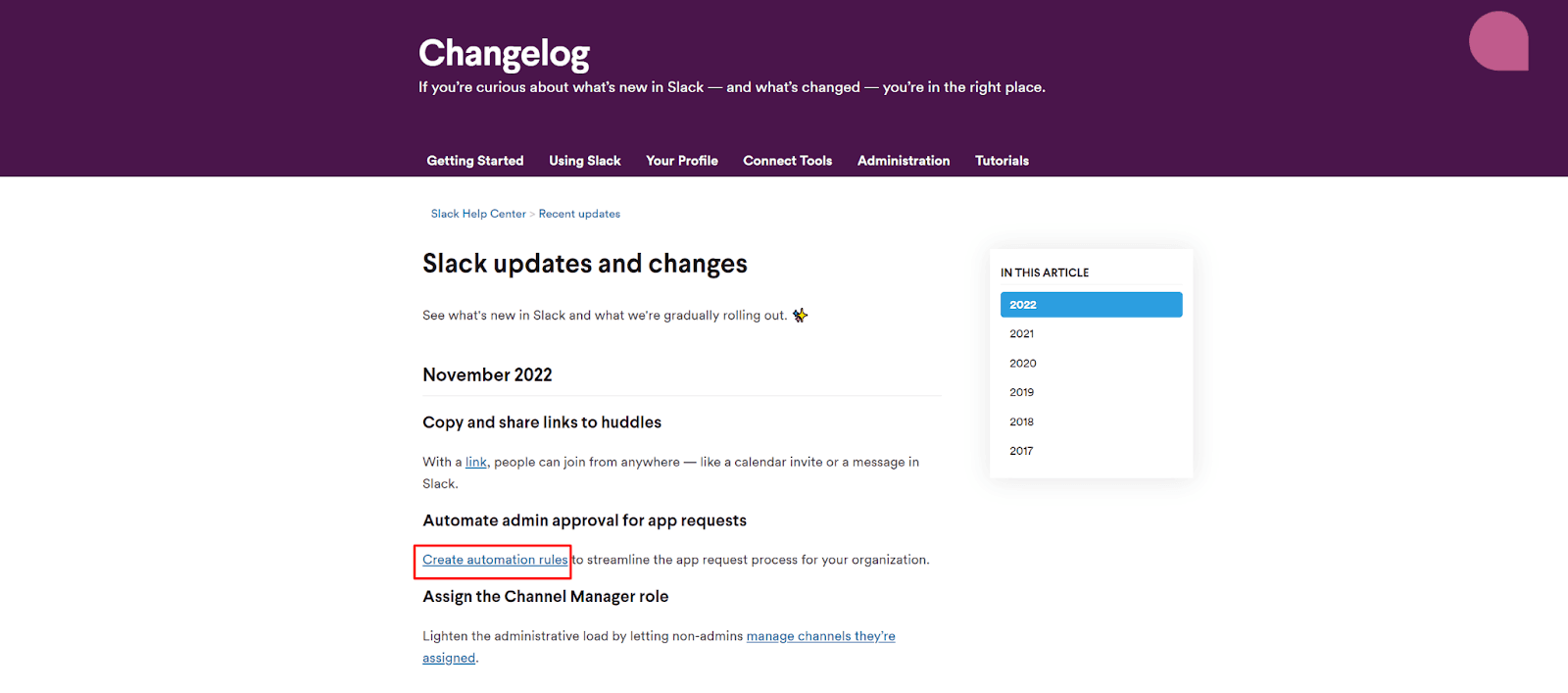
Source: Slack
The announcements are delivered monthly in a very short format with a wealth of links to Slack's knowledge base, where users can go to learn more about individual updates.
In the above screenshot, you’ll see one of those links leading to a knowledge base article explaining how to create automation rules which enables users to activate a new feature: automating admin approval for app requests.
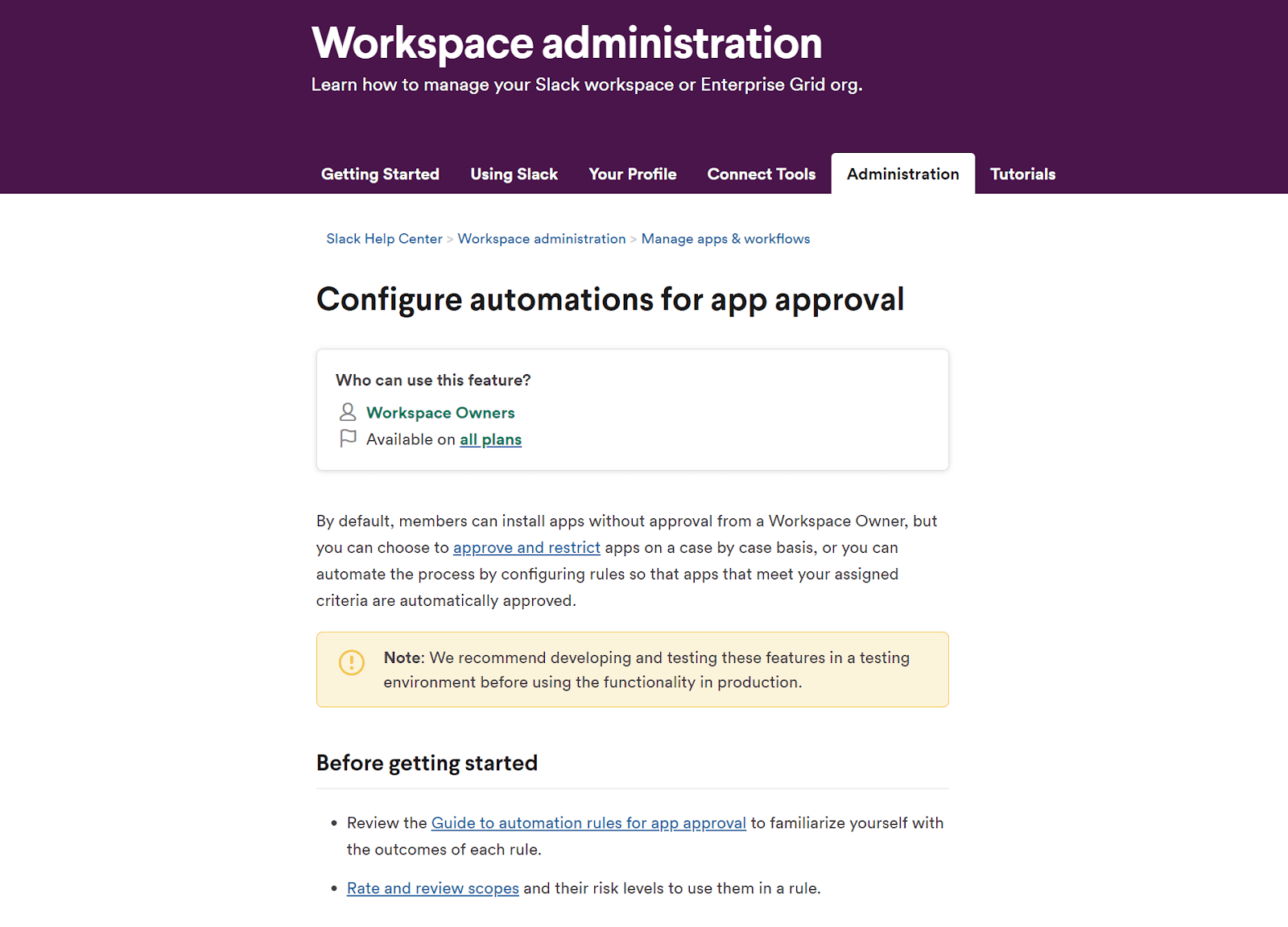
Source: Slack
Besides providing extra support for your users as they’re learning about new features, connecting your feature announcements to your knowledge base also has the benefit of helping your users form the habit of using said knowledge base.
That can be very useful to your efforts to increase product adoption because your knowledge base contains every bit of information a user needs to safely and effectively use your product.
When users have a place where they can find out everything about your product and solve issues they encounter while using it, they won’t have a reason to churn, and you can expect better adoption numbers.
Don't sweat if you don’t have a knowledge base for your product yet.
You can build one using Archbee, which allows you to write, publish, and manage quality knowledge base articles about your product online and in your own domain.
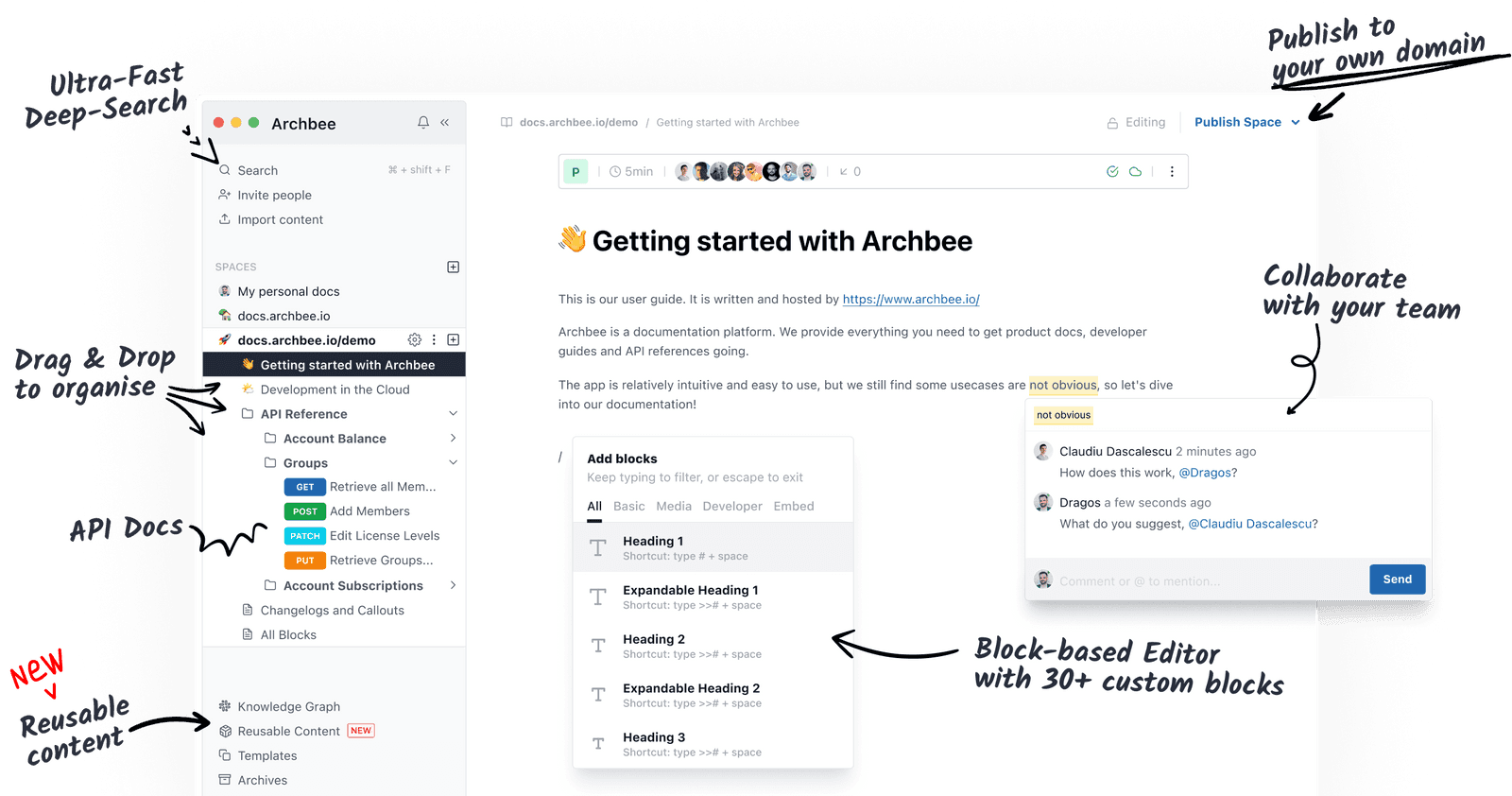
Source: Archbee
So, in a nutshell, you can’t go wrong with a brief but impactful feature announcement that includes a link to your knowledge base where users can find all the information they need to implement the feature into their work.
Conclusion
It’s clear that new feature announcements can be a driving force behind product adoption.
They can expand the usage of active users and also engage lapsed users who need a little push to return to the product.
However, those new features won’t get the traction they deserve or improve product adoption if you don’t put in the effort to announce them in a way that will have the widest reach and the strongest impact.
Use the tips we provided in this article to drive product adoption when you’re announcing new features.
Try Archbee's full range of features with our free 14-day trial.
Frequently Asked Questions
Because even great features won’t get used if customers don’t know about them or understand why they’re valuable. A clear, benefit-led announcement creates awareness, explains why the update helps the user, shows how to get started, and gives a direct call to action. Done well, it also re-engages lapsed users, reduces confusion around changes, opens a channel for feedback, and gives you measurable lift in activation, usage, and retention. For best results, pair concise benefit-focused copy with visuals, include a CTA, and share the news in both in-app and external channels.



